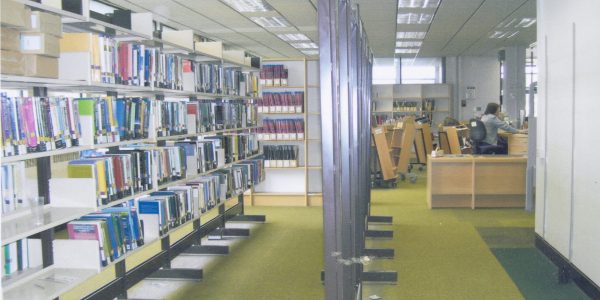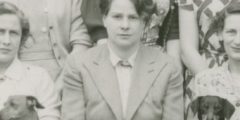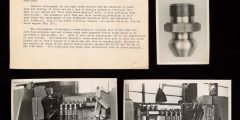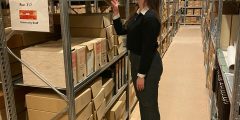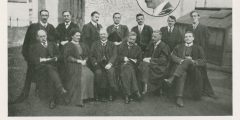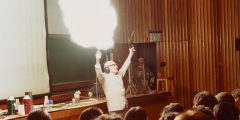George Green Library: Then and Now
June 18, 2024
To commemorate 60 years since the opening of George Green Library, Tracey O’Sullivan, Library Advisor, shares her memories and photographs from working there since 1985. Imagine the scene: no computers, no mobile phones, no Wi-Fi, no laptops, no self-service machines, just lots of books, journals and the like; card index cabinets and photocopier machines that …
Uncovering feminism and sexism in the University Archives
May 13, 2024
This is a guest post by Samantha Brinded, who volunteered with Manuscripts and Special Collections between May 2023 and March 2024. For decades, student magazines have played an integral role in university culture, and the University of Nottingham is no exception. In 1939, students established a newspaper called Gongster following on from the campus arts …
Audrey Beecham: Warden, historian, poet, anarchist, feminist, and champion of the underdog
March 1, 2024
Helen Audrey Beecham (1915-1989) came to the University of Nottingham in 1950 having been appointed warden of the newly built Nightingale Hall, which at the time was a women-only hall of residence. She served as warden and also lecturer in social and economic history for 30 years until her retirement in 1980. Before coming …
The History of the Historian of Science
May 15, 2023
This is a guest post by Anna Vogt, History undergraduate. Although I am a history student, I have also always been fascinated with science, especially the ways in which the humanities and STEM subjects intersect. As such, I jumped at the opportunity to undertake a placement with Manuscripts and Special Collections working on the papers …
History of the James Cameron-Gifford Library, Sutton Bonington Campus.
April 23, 2023
Dr James Cameron-Gifford was a leading agriculturalist born in 1909. He first came to Nottingham in 1942 when he was appointed as Technical Officer with the Nottingham War Agricultural Committee. The object of the committee was to increase the county’s food production, and among the many tasks allotted to Cameron-Gifford was the development of a …
Documenting the pandemic and beyond: website captures for the University Archives available to view
April 17, 2023
This is a post by Laura Peaurt, Digital Preservation Officer and Sarah Colborne, Archivist (Collections). Capture and Preservation In a previous blog we discussed using Preservica, our digital preservation platform, to successfully capture websites and social media for the archive. This is known as web archiving. The tools provided by the platform allow us to …
My experience interning for Manuscripts and Special Collections
September 27, 2022
This is a guest post by Helena, who successfully applied for a Faculty of Arts funded summer work experience placement. I’m Helena, a second-year History student at the University of Nottingham and I had the amazing experience of getting a placement and working at King’s Meadow Campus for a couple of weeks. My role was …
George Green Library: A Photographic History
April 6, 2022
George Green Library, originally known simply as the Science Library, was one of various buildings funded in the 1950s and 60s which signalled a massive investment in science teaching and research at the University of Nottingham, facilitated by the Vice Chancellor of the time, Bertrand Hallward. Although the proposed Science Library was originally conceived to …
International Women’s Day: Dr Edith Becket
March 10, 2022
Dr Edith M Beckett (1877-1952) was one of the earliest students of University College, Nottingham, where she obtained a London BA degree in 1898. Unlike some universities, London (and thus by extension University College Nottingham, which did not award its own degrees) allowed female students to earn a degree, rather than simply complete their studies …
Explosives: a Shaw-fire way to get students’ attention!
December 16, 2021
The Department of Chemistry has kindly entrusted over a century of records to Manuscripts and Special Collections, with thanks to Dr Samantha Tang for all her help and guidance. This fascinating collection contains a wealth of material relating to personalities within the department, the early days and development of the courses, class reunions, and lots …

